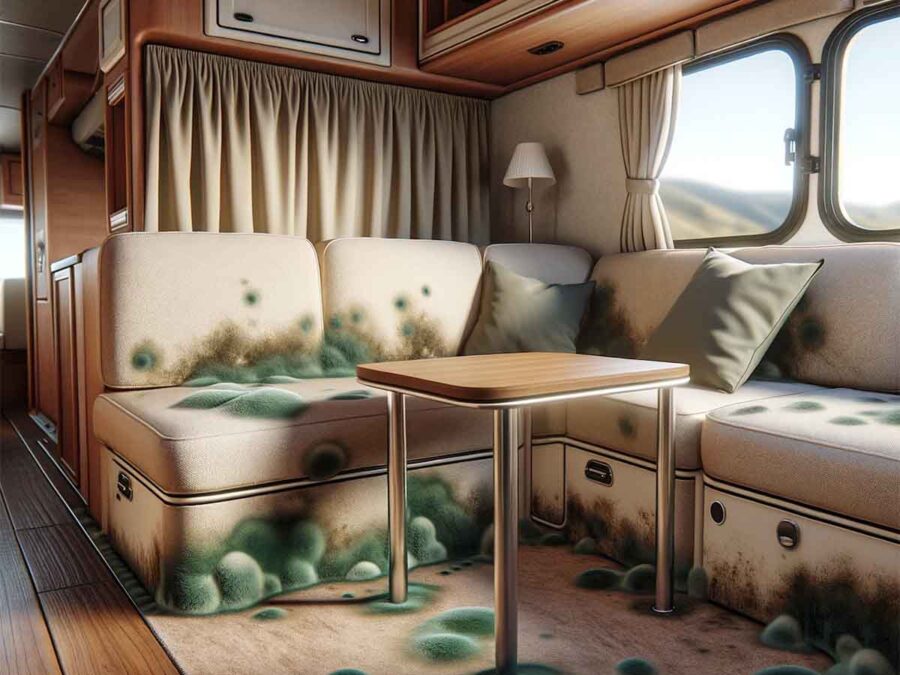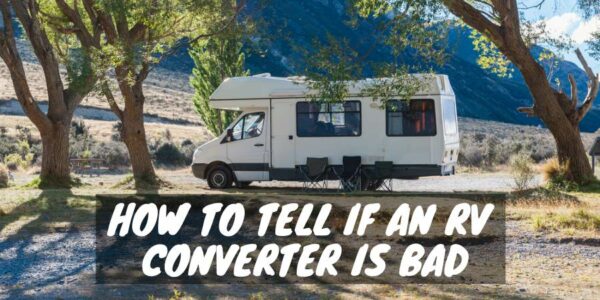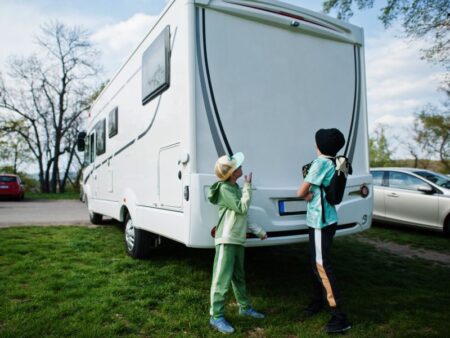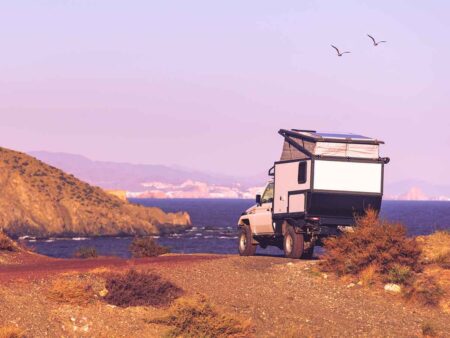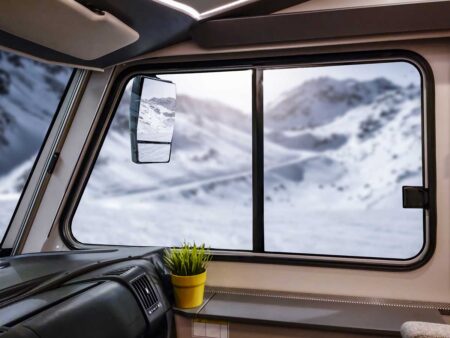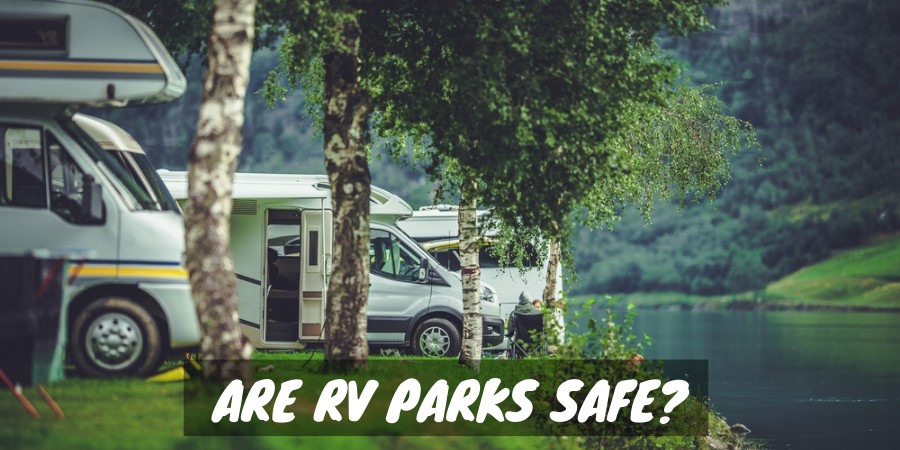When buying a used RV or pulling your camper out of storage, you may see some small areas of mold or mildew around moist areas, but is this a sign of larger mold issues? Mold toxicity is a genuine concern in homes and recreational vehicles, so you must know what signs to look for when cleaning your RV or shopping for a used camper to avoid getting sick on camping trips.
To give you a leg up on pinpointing mold concerns before they ruin your health and your RV, this guide details the signs your RV may have a toxic mold problem.
Inside, we explain where mold likes to hide, how to identify mold and associated illnesses, the correct method to eradicate mold in RVs, and when you need to throw in the towel and get a new recreational vehicle.
Don’t risk your health and think RV mold is nothing to worry about. Instead, please read the information below to ensure you’re dealing with RV mold toxicity the right way.
Top Signs of Camper Mold Toxicity
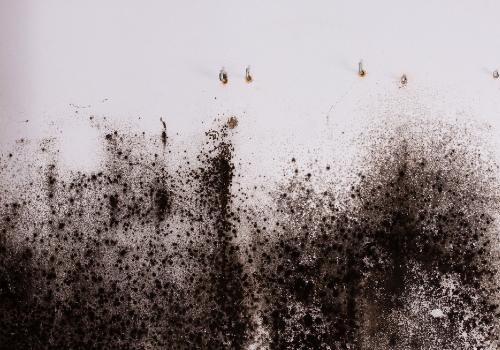
Any time you or your family see or experience any of the following signs of mold toxicity during or after spending time in your RV, you’ll need to take further action:
1. Musty or Bad Odors
Whenever you smell a musty or foul odor when entering your RV, you need to look closer, no matter how slight the scent.
Musty smells emanate from moist wood and moldy growths. You often cannot see this mold because it’s hidden in the deep recesses of your RV, but your nose tells you something isn’t right.
2. Physical Symptoms
If you notice RV occupants suddenly suffering from any of these symptoms during the use of the recreation vehicle, you’ll need to rule out mold toxicity. Mold toxicity can cause:
- Sore throat
- Shortness of breath or wheezing
- Coughing
- Sneezing
- Nasal congestion
- Itchy eyes, nose, or throat
- Runny nose or eyes
- Dry, itchy, or red skin
- A shift in cognitive thinking or physical control
- Dizziness
If symptoms clear up when occupants remove themselves from the RV, it’s a sign the problem is most likely mold contamination within your camper. However, sensitive people or heavy mold levels can cause symptoms that linger for months after exposure.
And don’t forget your furry friends when dealing with possible RV mold issues. Pets exhibit different symptoms of mold exposure than humans, like scratching, bleeding from the nose, or extreme lethargy.
- FIND MOLD FAST: MOLD ARMOR Do It Yourself Mold Test kit safely and easily tests for the presence of mold with visible results in…
- FOR INDOOR AND OUTDOOR TESTING: The Do It Yourself Mold Test Kit can be used for indoor or outdoor mold testing. Tests indoor air…
- THREE TESTING METHODS: (1) Indoor Air Quality Test Method (2) Air Conditioning & Heating Sample Method (3) Surface Sampling…
- INCLUDES EVERYTHING YOU NEED: Each air quality tester and mold kit contains a petri dish, swab, and mold growth medium.
- OPTIONAL LAB ANALYSIS: For an additional fee, mail in the results to determine the mold type.
3. Visible Mold or Mildew Growth on RV Surfaces
Toxic mold doesn’t always linger behind RV wall panels or inside cabinets. Often, mold will start growing out in the open, making it easy to spot.
Mold will first take hold in any area that retains moisture, like places of continual leakage problems or areas that experience moisture collection during active RV use.
6 Mold Types Found in RVs
Black Mold
In terms of what type of mold is the most common, black mold (Stachybotrys chartarum) tops the list and encompasses several different types of fungus. The actual color of black mold can range from dark grey to green, to reddish-brown, to black.
Luckily, studies indicate that low-dose black mold exposure rarely causes physical distress. However, heavy black mold growth inside an RV will cause respiratory issues, especially in people with compromised immune systems.
Chaetomium Mold
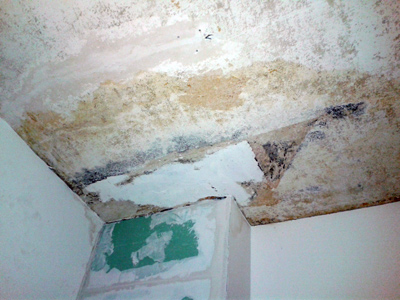
Chaetomium mold (click for picture) loves water damage and spreads quickly on damp wallpaper, carpet, wood, and drywall, especially in dark areas.
This type of mold is responsible for allergy symptoms such as difficulty breathing and red, itchy, and watery eyes. In addition, long-term exposure to chaetomium mold can cause autoimmune diseases and neurological issues.
Chaetomium molds start as a white fuzzy growth that turns a milky bluish-green as it matures.
Aspergillus Mold
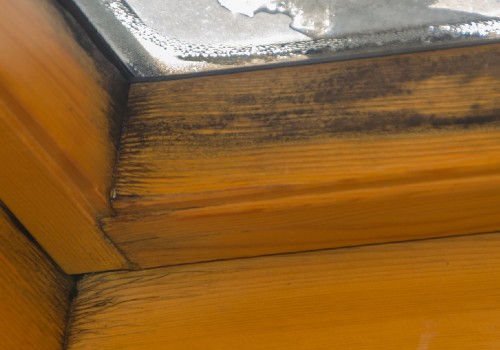
Aspergillus mold is prevalent in indoor and outdoor environments, so most people tolerate this variety well. However, breathing in the spores can cause sinus or lung infections if you have a weak immune system.
This type of mold starts with a yellow or whitish color, and the surface will turn black as it grows, remaining light underneath.
Aspergillus mold is the type that will blanket your RV interior if you close it up on a humid day and stick it in storage without ventilation.
Penicillium Mold
Penicillium mold is prolific in the environment, but getting it trapped inside your RV causes most people to exhibit breathing problems or infections such as bronchitis.
Penicillium mold has a range of bluish-green shades. This mold is more common on food products or surfaces with drips from wet food items.
Fusarium Mold
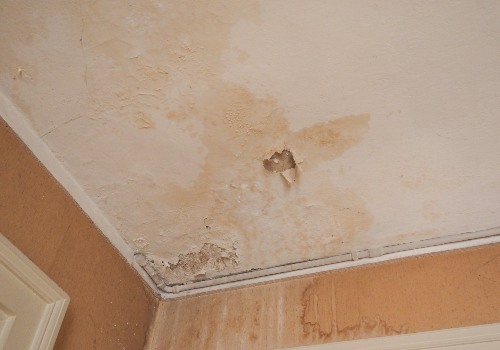
Fusarium mold is often found in soil and planters but can hang out inside your RV in moist areas or hide under carpets. This mold is known to cause a rare but severe eye infection.
Fusarium mold on furniture or walls appears like a coffee stain, while in a planter or on soil, it appears more like a wet, creamy, greyish blanket.
Alternative Mold
Alternaria mold is another camper mold toxicity issue that causes the most symptoms in the warmer months.
The mold prefers fabrics over wood items but can grow anywhere inside your RV. Symptoms of Alternaria exposure include typical seasonal allergy distress such as runny nose and eyes, sneezing, congestion, or dry/dehydrated skin.
Alternaria mold grows in brown to dark-brown spots across surfaces, making it reasonably easy to identify.
Best Way to Clean or Remove Mold from an RV
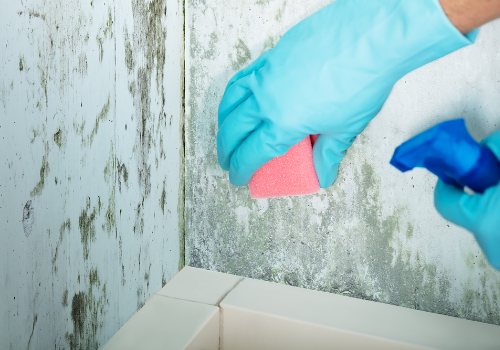
For light to moderate mold levels, you should be able to successfully clean the spores off surfaces. Always wear a protective eye cover, rubber gloves, and a fine-particulate mask when working near mold.
Bleach and vinegar are two options to eradicate mold, but mold experts and the EPA (Environmental Protection Agency) state that vinegar is the far superior solution for the job.
Vinegar kills around 82% of mold spore types completely, while bleach often leaves significant traces of mold spores behind.
It’s best to use full-strength vinegar in a spray bottle or on a rag to clean mold from all surfaces. If you have some items stained by the mold, you can try bleach or hydrogen peroxide to remove the marks.
For vinegar or bleach on mold, let the cleaner air dry, do not rinse with water.
Borax and baking soda are other cleaning options to get rid of mold. These products alter the pH of the surface, making it inhospitable for mold growth.
You can also mix a 50/50 ammonia and water solution to spray on the surface, wait a few hours, then rinse. However, you must never mix ammonia with any cleaning product containing bleach, as it will form toxic and hazardous fumes.
Another crucial tip is never to mix vinegar and hydrogen peroxide because it forms a very corrosive chemical reaction that will damage surfaces and skin.
To keep mold spores from regrowing in your camper, dispose of mold-cleaning rags inside a plastic bag, place them in the trash, and wash your clothes immediately in hot water with a cup of white vinegar.
Removing Mold From Wood RV Wall Panels, Furniture, or Studs
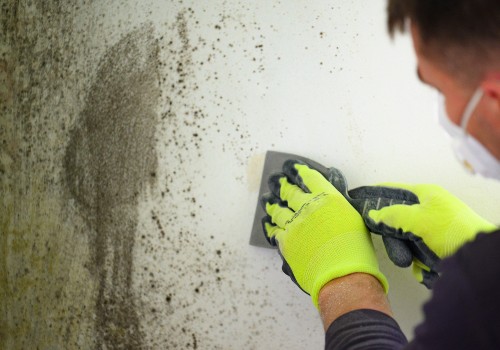
For small areas of mold growth on wood, you can use a vinegar-soaked rag to wipe away growths from the surface, then spray the wood with vinegar and let it dry. Treat the area several times to ensure you’re killing any stray mold spores.
For large areas of mold, the only way to fix the problem is to remove and replace any wood studs, framing, wall panels, flooring, or furniture items. After removal, clean the area with a mold-killing solution, let it dry, then rebuild.
To help guide your decision to clean mold, the EPA suggests DIY mold removal for areas less than 10 square feet and a professional mold remediation service for larger issues.
Signs RV Mold Is Too Bad to Fix
There will be times when an RV camper mold toxicity problem is so severe you can’t fix it affordably.
Often, the only way to eradicate mold is to gut the entire RV down to the structural metal framing and rebuild it from scratch. However, it’s more cost-effective to purchase a new camper and trash the mold-infested RV in this instance.
A frustrating issue is when you repair all leaks and clean up all visible mold from the RV, yet someone still exhibits signs of mold allergies or sensitivity after being inside.
This issue generally indicates mold is growing behind the wall panels or under the carpet or linoleum, and you’ll only know this by tearing paneling loose or ripping up the floor. Damaging an RV interior that’s otherwise in great shape means you can’t trade it in or sell it to a person not sensitive to mold spores.
However, sometimes toxic mold is so prevalent inside an RV the best order of business to keep everyone safe is to have it hauled to a dump or scrap yard and accept your losses.
Best Tips to Reduce Camper Mold Toxicity
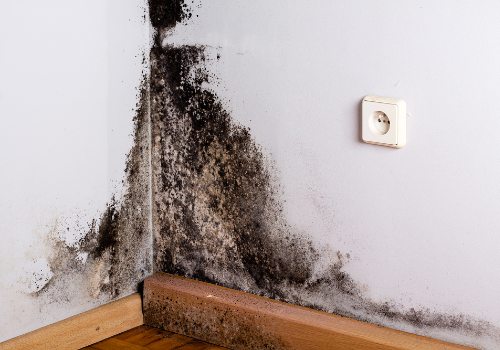
The best solution to stop mold growth inside your RV is to follow these tips:
Repair RV Structural and Plumbing Leaks
Mold and moisture go hand-in-hand, so repairing any structural leaks in the RV roof, walls, or inside storage compartments is the first line of defense to stop mold.
Another place to look for water leaks is around plumbing fittings from your intake port, water heater, and lines that run to your shower, toilet, and sinks. RV travel and temperature fluctuations loosen plumbing connections and cause small leaks that easily go unnoticed if you don’t actively inspect your fittings.
Once you seal any leaks, regularly inspect and maintain your camper to prevent new leaks from occurring.
Reduce Humidity
Keeping humidity inside your RV to a comfortable level will starve mold of the moisture required to live.
Use these tricks to keep humidity levels under control:
Ventilate
Want to Connect With a Community of Over 1,078 RV Enthusiasts?
A continual flow of fresh air will dissipate humid air trapped inside your RV, so keeping windows open a crack or running vents and fans will do wonders to stop mold growth.
Never cook steamy food or shower without running an exhaust fan to ventilate the RV.
Always crack some vents or windows when you put your RV in storage. Open all cabinet doors, empty the fridge and freezer, and prop the doors open to prevent trapped moisture from growing mold. This will help prevent some camper mold toxicity issues.
Run the Air Conditioner
An RV air conditioner removes moisture from the air. Still, if you have poor air circulation inside your RV or love to run the unit at a frigid temperature, they also cause condensation to form on interior surfaces.
Closing up all the RV windows and doors to keep the cool air in also traps all the moisture from your breath, which piles up within a motorhome, travel trailer, or fifth wheel.
Covering windows with thermal curtains or adding sheet insulation can alleviate window condensation in your RV when running the A/C.
Clicking the thermostat temp up a few degrees can also alleviate condensation issues.
Use a Dehumidifier or Desiccant
When you need more humidity control inside your RV, getting one or two small dehumidifiers is best to draw out excess moisture in the air.
Use moisture-absorbing desiccants inside RV cabinets or closets as another cost-effective way to reduce moisture. Desiccant products don’t need electricity, so you can leave several containers out when you store the RV to keep mold at bay. However, desiccants need replacement after several weeks or months, depending on how humid your RV interior gets.
Dehumidifying products are also essential during cold weather when you run your RV propane furnace, which emits humidity that will condense on colder surfaces.
RV Mold Toxicity Wrap-Up
Mold is a pervasive problem in recreational vehicles if you don’t take care to keep leaks and interior humidity levels under control.
Using the valuable information in this guide, we can help you enjoy mold-free camping trips. So please follow the tips above to protect your RV investment and maintain the good health of your family and friends from these Camper Mold Toxicity issues.
RV Mold! (Video)
Related Questions
- What are the common physical symptoms of mold toxicity in humans and pets?
In humans, common physical symptoms of mold toxicity can include respiratory issues like wheezing and difficulty breathing, skin irritation, sinus congestion, persistent cough, and eye irritation.
In pets, symptoms may manifest as respiratory distress, excessive scratching in the absence of pests, unusual lethargy, and changes in appetite or behavior.
- What are the different types of mold commonly found in RVs, and what are their characteristics?
Common types of mold found in RVs include Aspergillus, Penicillium, and Cladosporium.
Aspergillus is a fast-growing mold that can cause respiratory issues, Penicillium is blue or green and can lead to allergies and asthma, while Cladosporium, typically black or green, grows on fabrics and wood surfaces and can cause skin, eye, and sinus infections.
- What are the best methods to clean or remove mold from an RV?
The best methods to clean or remove mold from an RV involve first using a solution of one cup of bleach mixed with one gallon of water to scrub the moldy areas, then thoroughly drying the cleaned areas to prevent mold regrowth.
For stubborn mold, a commercial mold remover or a vinegar solution (1 part vinegar to 1 part water) can be used, but always remember to wear protective gear like gloves and a mask to ensure good ventilation during the cleaning process.
- What are the signs that mold in an RV is too severe to fix, and a new vehicle may be necessary?
Signs that mold in an RV is too severe to fix include extensive visible mold growth on walls, ceilings, and floors, persistent musty odors even after cleaning, and recurring health symptoms like allergies or respiratory issues when inside the RV.
If the structure of the RV has been compromised due to mold damage, such as rotting wood or crumbling drywall, it may be more cost-effective and safer to invest in a new vehicle rather than attempting extensive repairs.
- What are some tips to reduce camper mold toxicity, such as repairing leaks and reducing humidity?
To reduce camper mold toxicity, it’s crucial to promptly repair any leaks and ensure proper ventilation to reduce humidity.
Additionally, using dehumidifiers, regularly cleaning and disinfecting surfaces, and using mold-resistant materials for any interior renovations can significantly help in preventing mold growth.
"Man cannot discover new oceans unless he has the courage to lose sight of the shore."
-- Andre Gide

